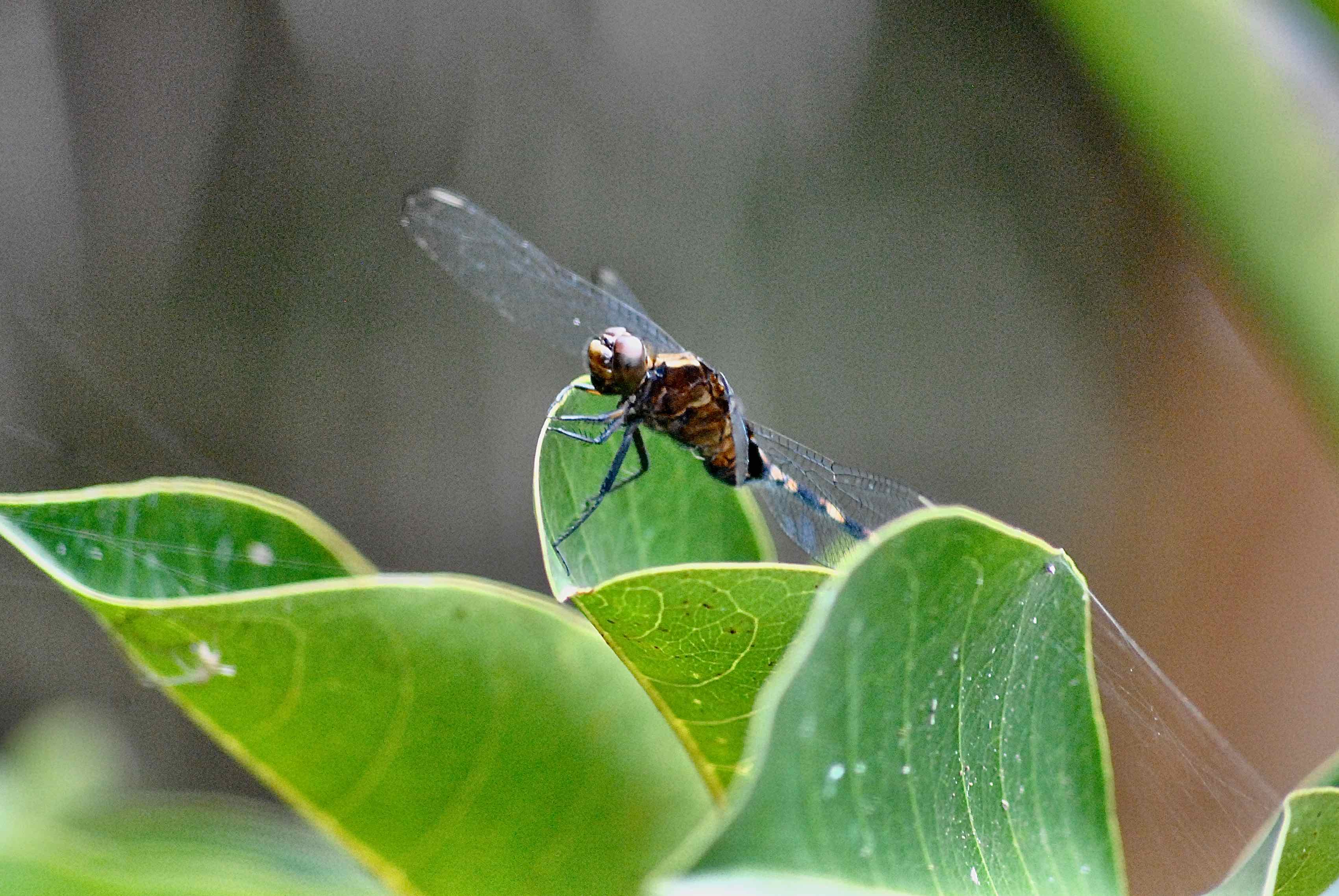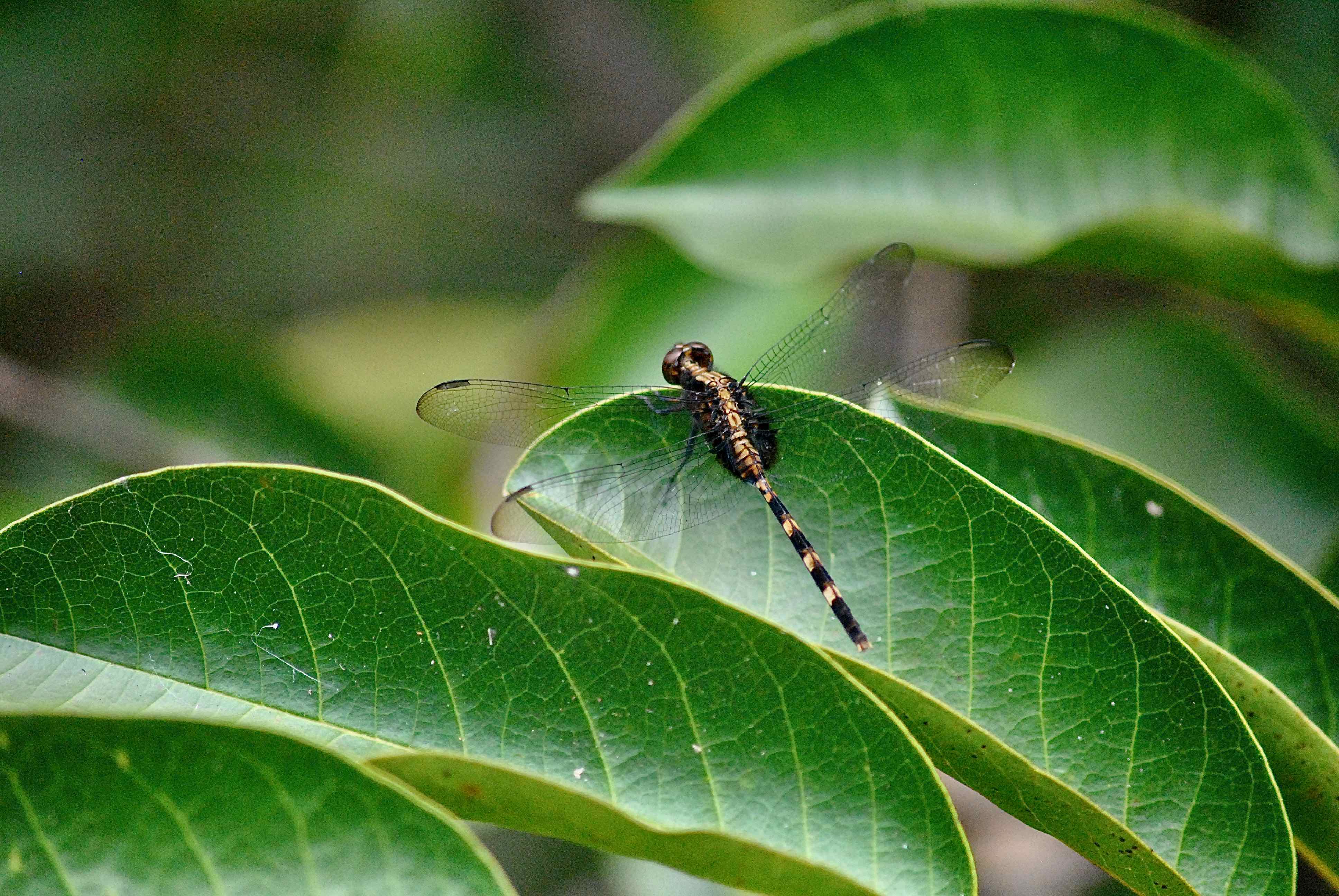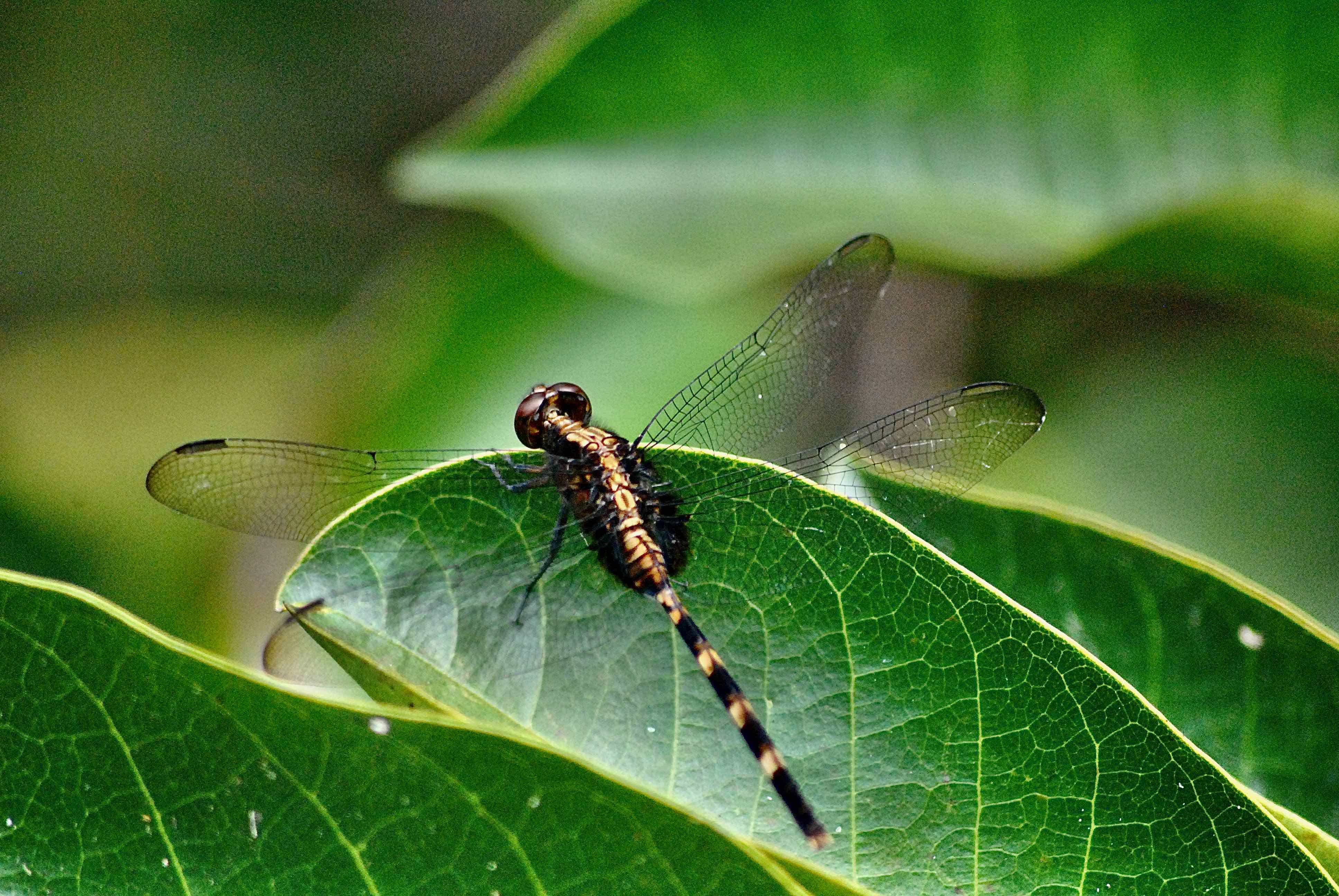
Pin-tailed pondhawk dragonfly, photographed at Daggerwing Nature Center, Boca Raton, Palm Beach County, in August 2013.
You might be familiar with the eastern pondhwak dragonfly, Erythemus simplicicollis. You might not be with one of its lesser known cousins, the pin-tailed pondhawk, Erythemis plebeja. Unlike the eastern, the pin-tailed pondhawk is not a Florida native, having called the Sunshine State home for only 50 some year.
According to biology professor and dragonfly expert Stanley W. Dunkle, the pin-tailed pondhawk wasn’t discovered in Florida until someone spotted one in the Miami area in 1971. Since then, it’s been migrating slowly northward up the Peninsula. It's believed that the pin-tailed pondhawk got here through human activity. Precisely how isn't known, but given the movements between our ports and points south, it's not hard to imagine. For what it's worth, the photos on this page were taken at the Daggerwing Nature Center in Boca Raton nine years ago.
The only place within the United States where the pin-tailed pondhawk is likely native is South Texas. We’ve seen reliable reports of pin-taileds residing in Arizona as well, but nothing official and no indication whether they’re native or exotic.The pin-tailed pondhawk’s range extends through Mexico, Central America, the Caribbean and South America as far south as Paraguay and Argentina.
Pin-taileds are the only pondhawk species found in central and South Florida that are predominantly black. Young males can be brownish in the face and thorax, turning black as they mature.
On the photo above, note the yellow, or cream, line that runs down the back of thorax and alternating segments of the abdomen. Pin-tailed pondhawks can approach or exceed an inch-and-a-half in length.
According to the Integrated Taxonomic Information System, there are 10 pondhawk species, all in the genus Erythemis. Favorite habitats for pin-tailed pondhawks include woodlands where freshwater is present, whether it be ponds, lakes, ditches or slow-moving rivers or streams. Like all dragonflies, they reproduce in water.
Males tend to perch low above the water, but they’re also aggressive and agile flyers.
The International Union for Conservation of Nature rates pin-tailed pondhawks as a “least concern” as to extinction. In fact the population is believed to be increasing. The one threat it faces is loss of habitat.
Pin-tailed pondhawks are members of Libellulidae, the family of skimmer dragonflies.



